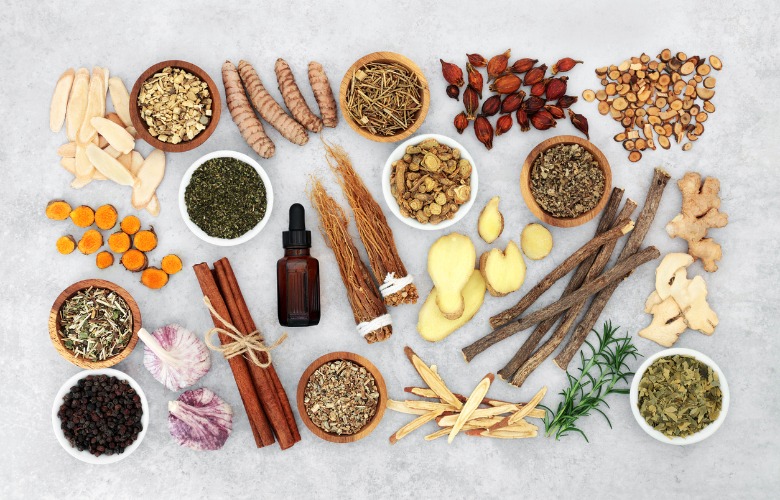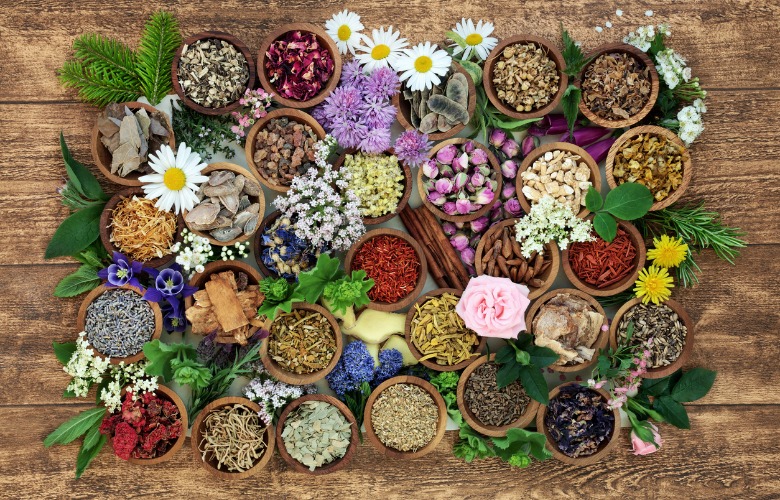Difficult or Painful Periods
Posted by Jemile Nesimi Hobson, B.A. on Oct 12, 2024
Difficult or painful periods occasionally occur to most women throughout their lifetime; however, some women experience them more often. The medical term for difficult or painful periods is dysmenorrhea. Other causes of painful, irregular, and heavy menstruation include a variety of medical conditions including polycystic ovary syndrome (PCOS), endometriosis, and uterine fibroids. Symptoms vary between person to person to person throughout the menstruation cycle.
There are some natural approaches to lessening pain and addressing menstrual bleeding.
Many women experience a 28-day menstrual cycle on average. Their periods tend to last as long as seven days and as short as four days. Abnormal menstruation or difficult periods include irregular bleeding known as menorrhagia and painful periods known as dysmenorrhea.
Difficult period symptoms
Symptoms that indicated heavy bleeding include
- Your period lasts for longer than a week (7 days)
- You bleed through tampons or pads every hour or for a few hours in a row
- You find that you need to use more than one pad at a time
- You need to change your tampon or pad in the middle of the night
- You find blood clots larger than a quarter
- You sometimes bleed through your clothing and bedsheets
- You have symptoms like fatigue or shortness of breath indicating anemia.
Symptoms of painful periods:
- Headaches
- Fatigue
- Diarrhea
- Leg pain
- Low back pain
- Pain that worsens during your period
- Intense cramping in the lower abdomen that is painful
- Gastrointestinal issues such as bloating and nausea
Causes of painful difficult periods include
- Endometriosis – when endometrial-like tissue grows outside of your uterus
- PCOS or Polycystic ovary syndrome is a hormonal disorder causing small cysts in the ovaries
- Complications from pregnancy including ectopic pregnancy or miscarriage
- Adenomyosis is endometrial tissue that grows in the muscle wall of the uterus
- Certain cancers like cervical and uterine cancer
- Uterine fibroids – benign tumors the grow in the walls, lining, or outside of the uterus
- Uterine polyps – Overgrowth of endometrial tissue in the uterus
- Inherited bleeding disorders such as von Willebrand’s disease which can cause irregular periods
- Some medications like blood thinners or hormonal medications
Studies show that dysmenorrhea is very common, affecting 25 to 50% of adult women and 75% of teens/young adults. Dysmenorrhea can be severe enough to interfere with daily activities for 20% of women. Usually, dysmenorrhea (pain without organic pathology) is divided into primary and secondary (pelvic pain with pathologic conditions such as PCOS or endometriosis).
Research shows that dysmenorrhea usually appears 6-12 months from the start of the first-ever period or menarche. Sometimes it doesn’t occur until four or five decades later as a woman ages.
Phases of the menstrual cycle
Phase 1 & 2: The menstrual phase cycle (also known as the first stage of the follicular phase cycle) occurs when the uterine lining is shed when there is no fertilized egg to start a pregnancy. This is prompted by a drop in the hormones progesterone and estrogen in the body, signaling the body to shed the lining and the ovary to begin ripening more eggs. Because estrogen builds the lining of the uterus and progesterone helps to fertilize the egg and keep the lining thick; they are no longer needed by the body and the cycle begins again.
The degree of shedding varies from woman to woman, as well as symptoms that may affect the cycle. The menstrual cycle is dictated by your hypothalamus and pituitary gland which sends signals back and forth from your ovaries, indicating that the body needs to prepare the ovaries and uterus for pregnancy. Therefore, menstrual bleeding occurs to shed the body of blood and tissue of the uterine lining.
Phase 3: As ovulation approaches, the growing follicle secretes more estrogen. The pituitary gland sends signals through the hormone LH (luteinizing hormone) to the follicle to release an egg from the ovaries. The egg travels from the fallopian tube towards the uterus. This is where fertilization can take place. Also, at this time the cervix opens and fertile mucus is produced by a gland in the endocervix. The purpose of the fertile mucous is to aid the survival of sperm and helps their movement from the vagina through the cervix. The lifespan of the egg after ovulation is just 12-24 hours. Fertilization must take place during this time to conceive.
Phase 4: The luteal phase, also called the secretory phase, is the period beginning the day after ovulation and runs through the remainder of your menstrual cycle, ending the day before your next period. Typically this period can last between 10 to 16 days. At the onset of the luteal phase, BBT (Basal Body Temperature) increases to provide a fertile environment for the ovum
How do you naturally approach difficult periods?

Traditional Chinese medicine and Acupuncture
A TCM book going back to 1237 A.D. was devoted to gynecology and obstetrics of Chinese medicine called “The Complete Book of Effective Prescriptions for Diseases of Women”. In TCM, the Liver is influenced by menstrual cycles and the uterus function can be affected by the Liver. The liver controls energy and blood flow; however, stress can cause Qi or energy stagnation. Also, the Qi flow in the Spleen can cause the Qi to be stuck or insufficient when it runs through the pelvis – causing pain and excess menstrual blood flow.
Avoiding stress and relaxing before your period does is recommended. Herbal formulas can also be used to help improve your cycle and ease pain and regulate blood flow.
Toki-shakuyaku-san, a Japanese kampo formula, also known by its Chinese name Dang Gui Shao Yao San, includes a blend of peony root, atractylodes, lancea rhizome, alisma rhizome, cnidium rhizome, and Japanese angelica root. Tokishakuyakusan is used for the following menstrual issues:
- Anemia
- Poor blood circulation – esp. in the hip and leg area
- Irregular menstrual cycle
- Leukorrhagia
- Bad blood circulation after childbirth or miscarriage
Shakuyaku-kanzo-to, another Japanese formula can help normalize the menstrual cycle, cramping pain, and help with amenorrhea and dysmenorrhea. Known in Chinese as Shao Yao Gan Cao Tang and consisting of peony and licorice; Shakuyaku-kanzo-to is often used for pain-related conditions.
Studies show that acupuncture can reduce period pain by 50%. It was found that women who had acupuncture frequently saw more improvements in the intensity and related symptoms of period pain. Acupuncture is used to balance and move Qi in the body and increase circulation to help with menstruation. Acupuncture and traditional Chinese medicine are often used for fertility treatment because it balances reproductive hormones, helps build a healthy uterine lining, and increases the circulation to the uterus and ovaries.
Other ways acupuncture and TCM can help with your menstrual cycle:
- Regulates the hormones that control your period because it can help regulate the feedback loop between the brain and the ovaries
- Reduces elevated levels of hormones that block ovulation
- Improves ovarian and uterine blood flow
- Promotes ovulation
- Helps to maintain regular periods

Supplements
Eating a well-balanced diet rich in antioxidants and whole foods is the first step, however, women need the following vitamins and minerals to help with menstruation and can also help diminish the pain from periods.
- Calcium – may reduce menstrual pain because it supports muscle tone
- Magnesium – can help reduce menstrual pain
- Vitamin E – helps reduce menstrual pain
- Vitamin D – reduces inflammation
- Omega 3 fatty acids – lowers inflammation and has been shown to reduce menstrual pain
Herbal remedies
Dysmenorrhea can cause a host of symptoms – including cramping pain that radiates to the lower back and thighs, abdominal pain, loose stools, dizziness, headaches, and nausea. It is thought that this is caused by prostaglandins (hormone-like substances that have been linked to inflammation and pain) are in excess.
Other causes are conditions such as endometriosis and uterine fibroids among others. Some herbs that can be helpful include:
- Evening primrose – this herb has a long traditional history of relieving PMS symptoms, as it contains gamma-linolenic acid (GLA) with anti-inflammatory properties. It can also help with mood swings and bloating.
- Yarrow - particularly helpful for those with fibroids and heavy bleeding. This herb helps to slow bleeding and make you more comfortable.
- Chaste tree – helps to regulate your cycle, reduce endometriosis, and helps to ease PMS.
- Raspberry leaf – reduces menstrual pain, helps with uneven blood flow and irregular periods
- Lavender oil– used as aromatherapy helps to reduce the contractions in the uterus, therefore, helping to lessen painful cramps. Also helps with migraines and reducing anxiety as it can help you to relax your body.
- Bushilla – helps to keep you grounded and balances cycle rhythms
- Parsley – works to stimulate your period and helps to soften the cervix so it is open for the release
- Ashwagandha – helps relieve stress and anxiety and balances hormones
- Maca – traditionally used to regulate hormones including estrogen as well as ease stress, fight fatigue and reduce mood swings
- Fennel – helps with severe menstrual pain, studies show it can be as effective as pharmaceutical painkillers

Iranian herbal remedy
Known as Persian or Iranian medicine, there is a comprehensive herbal approach to painful menstruation and conditions that contribute to difficult periods. This medicine was focused on six principles, also known as Setah Zariah, which included nutrition, environment, physical activity, emotions, temperament, physical and mental characteristics, and waste materials being expelled from the body. Focused on health prevention rather than treatment.
There are 34 herbs used in Iranian medicine for menstrual issues, some of these are:
- Saffron
- Sage
- Sumac
- Lion’s tail
- Marjoram
- Fennel
- Nettle
- Yarrow
- Makhlase
- Cumin
- Oregano
- Thyme
- Matricaria chamomilla
- Red clover
- Curcumin
- Melissa officinalis
- Wheat Germ Extract
- Valerian root extract
- Flaxseed
Other ways to help:
- Eat a diet rich in calcium – this can include beans, almonds, leafy greens
- Antioxidant foods – blueberries, cherries, tomatoes are antioxidant-rich
- Avoid processed foods
- Soy milk has helped some women reduce menstrual pain
- Drink 8 glasses of water a day
- Exercise for at least 30 minutes per day – 5 days per week
- Relax – stress has been found to increase menstrual pain












